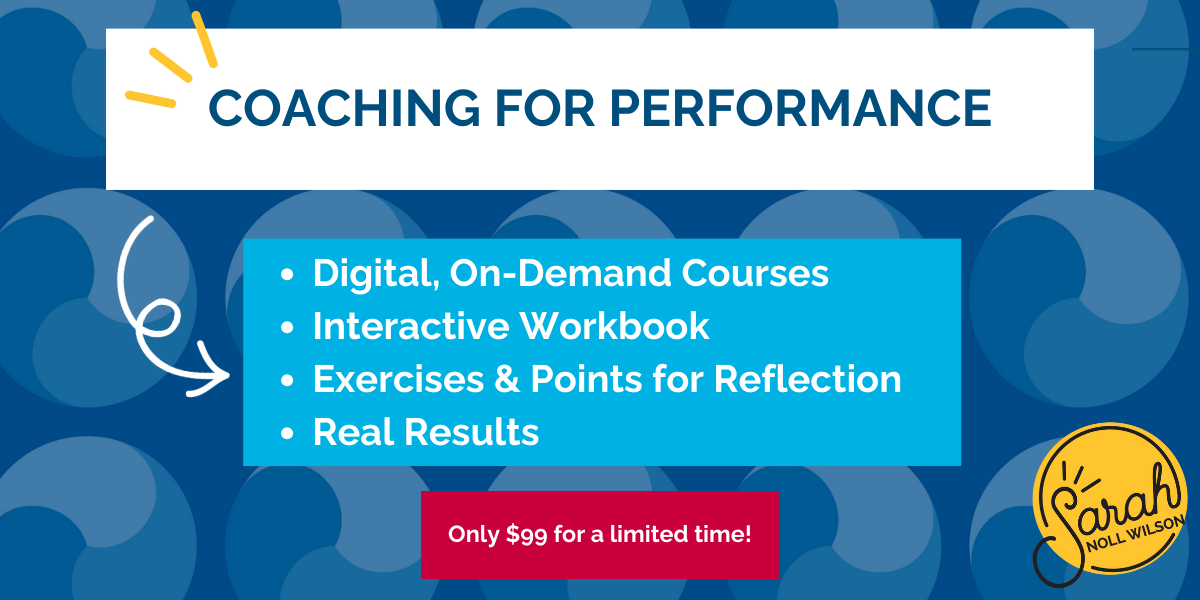
Leadership is hard, but learning to assess and center your impact makes it easier. We’re going to learn how to do an impact audit. We’re going to be vocal about what you want to achieve and get feedback that is meaningful to the impact you want to make as a leader.
Conducting an Impact Audit
You might be familiar with a concept called a “gap audit.” It helps companies identify areas with almost inevitable disconnections between intention and impact. The gap audit historically involves:
- Assessing a company’s or leader’s current habits.
- Comparing them to industry standards.
- Identifying gaps between intended and actual impact, goals, and values.
As we’ve implemented this tool more and more with clients, we’ve seen that this approach has some limitations. While it can help identify areas for improvement, it doesn’t necessarily provide a comprehensive understanding of how a company’s efforts impact its team members and stakeholders. Therefore, the gap audit has evolved into what we’re now calling an “impact audit.”
An impact audit, often coupled with a 360 review, goes beyond simply identifying gaps between action and intent. It seeks to measure the impact of a company’s or leader’s efforts on its team members, customers, and other stakeholders. It usually involves collecting data and feedback from various sources, including surveys, focus groups, and individual interviews. This is done to understand how the company’s efforts are perceived and experienced by different groups.
The gap audit remains a valuable starting point for companies looking to improve their practices; the evolution towards an impact audit reflects a growing recognition of the need to move beyond simply identifying gaps to actively measuring and enhancing the impact of these efforts.
Assessing your impact as a leader is critical because about 40% of our behavior is on autopilot. This kind of intentional reflection can help you to:
- Identify your leadership strengths and weaknesses and develop a meaningful growth plan.
- Align your leadership with your organization’s mission, vision, and values.
- Engage and motivate your team members by demonstrating your commitment to their well-being and growth.
- Build trust and credibility with your stakeholders by being transparent and accountable for your impact.
- Drive innovation and change by challenging the status quo and experimenting regularly.
Implementing an Impact Audit at Work
An impact audit is a comprehensive way to measure the impact of your leadership on your organization and its stakeholders. It can evaluate the effects of your decisions, actions, and behaviors on the organization’s performance, culture, and stakeholders’ well-being.
To conduct an impact audit, you should start by identifying the areas of your leadership impact that you want to evaluate, such as decision-making, communication, team building, conflict resolution, and goal setting. You should also identify the stakeholders affected by your leadership, such as team members, customers, colleagues, and the community.
Data on the impact of your leadership in each area and for each stakeholder group can come from various sources. These sources include surveys, focus groups, performance metrics, financial statements, and external reports. In our work, I find the most meaningful data comes from the conversations I can conduct as a neutral and trusted outsider.
Six Questions to Ask During an Impact Audit
Various questions can be asked during an impact audit to assess a leader’s or organization’s impact. Here are some examples of questions that can be asked:
- What types of things can I do to make you feel heard?
- What would you accept as evidence that I was listening deeply?
- What do you look for in someone who listens?
- What insights do you have about [a subject/conversation]?
- Can you recall an instance when you have seen me perform [an action] well?
- How comfortable would you bring it to my attention if I came up short?
These are just a few questions that can be asked during an impact audit. The specific questions you ask will likely depend on the organization’s goals and context and the impact audit’s focus. The key is asking thoughtful, open-ended questions to encourage reflection and analysis of the organization’s impact.
Here’s a caveat—do not ask questions you don’t want to know the answers to or aren’t willing to consider. Asking these questions and then minimizing their responses or outwardly disagreeing can create an unsafe environment almost immediately. If you’re doing it yourself, the worst possible outcome from this process is that you dismiss, criticize, or judge the person giving you the feedback. Any retaliation—even sarcasm—will shut down your relationships with these key team members or stakeholders. Likewise, asking these questions and taking no action is more damaging to the relationship than never having asked for feedback. We have seen this firsthand time and time again.
Working with Data from an Impact Audit
Once you have collected the data, you should analyze it to identify trends, patterns, and areas of improvement. You should also bump this data up against your goals, benchmarks, and best practices in your industry or field.
For findings that identify areas of potential improvement, be sure to develop a plan for improving your leadership and maximizing your positive impact. This plan should include specific actions, timelines, and metrics for measuring progress and success. At the center of it should be consideration of what you need to do more of and what you need to do less of or stop doing altogether. We are very keen to look for the items to add, but not for the things we do that get in the way of our goals.
Being Vocal About the Impact You Want to Make
As a leader, it is crucial to communicate repeatedly and be very vocal about the impact you want to make. This clarity can help set the tone for your team and provide a sense of purpose for everyone involved. Sharing your goals and vision with your team can motivate and inspire them to work towards a shared objective. Being vocal about your impact can also help you identify team members who share your vision and are committed to helping you achieve your goals. Publicly stating your impact is holding yourself accountable, which can be a powerful motivator.
Being overwhelmed with multiple priorities and tasks can happen quickly for a leader. Focusing on one thing at a time can help you maintain clarity and ensure you’re making progress toward your goals. One effective way to do this is to identify the one thing that, if accomplished, would significantly impact achieving your goals. This “one thing” should be prioritized above all other tasks. Given your full attention, significant progress can be made—this might mean actually meeting the goal or until you reach a mastery skill level.
It can also be worthwhile to regularly invite feedback on that one thing to ensure you’re on the right track. This can be done by sharing your progress with your team and asking for their input and suggestions. While it may be uncomfortable, we encourage you to be open to constructive criticism and use it to improve your approach.
The process of self-awareness can have several benefits for a leader. It can help you, and your team members better understand their strengths, weaknesses, and areas for improvement. This increased self-awareness can lead to more effective communication and collaboration within the team, as team members can better identify and work with each other’s strengths and weaknesses.
Building Self-Awareness
We had a client recently share with us a time when he led a team and received feedback from a colleague that his communication style was intimidating. He reflected on how he initially felt defensive but ultimately took the feedback to heart and worked to adjust his approach to the ultimate benefit of his team.
Involving team members in the process of self-awareness can help build trust and create a sense of shared ownership and accountability. When team members feel that they are part of the decision-making process and have a say in how the team operates, they are more likely to be invested in the team’s success.
Asking questions that involve others in the self-awareness process can help a leader identify areas where the team needs support or development. By understanding the team’s strengths and weaknesses, a leader can better allocate resources and provide targeted training and support to ensure the team functions most effectively. Another client held a meeting specifically to ask for feedback and received unexpected but valuable insights from their team.
Receiving Feedback in a Way That Honors Your Team Members
As a leader, it is crucial to be open to receiving feedback. Feedback is a valuable tool for growth and development. Feedback makes it easier to know if you are progressing toward your goals or need to adjust your approach. Therefore, it is essential to cultivate a culture where feedback is welcomed and encouraged.
Having an open-door policy is a common practice that many leaders adopt to facilitate honest communication. However, it is critical to consider power dynamics when implementing an open-door policy. Some team members may feel uncomfortable providing feedback directly to their boss, especially if there is a power imbalance. Providing alternative ways to receive input may be more effective in these situations.
Anonymity can be beneficial in situations where team members may be hesitant to speak up. Some examples of different ways to receive feedback include anonymous surveys, email, text, voice messages, and live videos. These methods allow team members to provide feedback without fear of retaliation.
In today’s virtual work environment, feedback can be provided through various means. Some team members may feel more comfortable giving feedback through written communication, such as email or text. Therefore, it is essential to be open to different feedback forms and not limit yourself to one specific method. It is also imperative to let go of the idea that feedback only counts if given face-to-face.
Receiving feedback well is crucial for growth and development as a leader. Leaders should consider power dynamics when implementing an open-door policy and provide alternative ways to receive feedback. Consider anonymous surveys and written communication.
—
Assessing and centering your impact as a leader is crucial to success. Conducting an impact audit, being vocal about the impact you want to make, and receiving feedback in a way that honors diversity are vital steps to take. As a leader, it is your responsibility to create a safe space for feedback and continuously work on improving yourself and strengthening your impact. Have you experimented with an impact audit in your leadership practice?

Dr. Teresa Peterson
Dr. Teresa Peterson is the Director of Learning and Development for Sarah Noll Wilson, Inc. In her daily work, she serves as Sarah’s key content collaborator. Teresa enjoys facilitating, researching, and is passionate about applying best practices for learning to make our experiences meaningful, engaging, and accessible for all types of learners. Teresa holds a Doctorate in Education from the University of Northern Iowa and brings over twenty years of experience teaching, facilitating, and leading to our team. Our clients love Teresa’s grounded energy, depth of thought, and ability to listen deeply.


